
Original Link: https://www.anandtech.com/show/2724
500W to 550W: 12 Power Supplies Compared
by Christoph Katzer on February 20, 2009 5:00 AM EST- Posted in
- Cases/Cooling/PSUs
Introduction
Last month, we reviewed 20 power supplies ranging from 300W to 450W. These are great for entry-level or even midrange systems, with optimal efficiency typically falling in the 100W to 200W range. Today, we have 12 more power supplies on our test bench, this time targeting a slightly higher range of 500W to 550W. This particular sector is where we really start to see higher quality designs and better technologies, in part because these tend to be more expensive PSUs.

Honestly, this roundup is more of a two-way shootout, with a few extras thrown in for spice. We have four units manufactured by Enhance, four more from Seasonic, two by Sirtec, one Enermax, and one Topower. Last year we saw a lot of power supplies manufactured by Channel Well Technologies (CWT), but they don't tend to compete in the lower wattage market segments. These days, one manufacturer brings out a new top-notch design, and brands from all over the world jump on the bandwagon. Unfortunately, that makes it hard to find real innovations from the various PSU brands. Before, everyone at least tried to be different, but now the primary differences are in the fans, case color, and/or cable lengths. They try to make a "unique" design, but the goal is to do this with as little effort as possible.
All of the similarities do have some positives. Comparing units from different manufacturers can be a lot easier, as a basic component quality will be similar. If two units have similar voltage regulation and efficiency but one unit is quieter, cheaper, or has better thermals then you can safely choose that option. More likely is that you have to balance all five areas, but we will see which models rise to the top in this roundup.
Arctic Cooling Fusion 550R - Overview
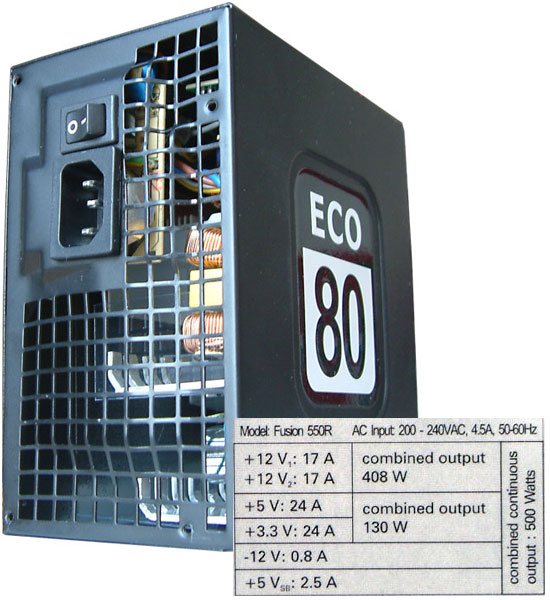
Arctic Cooling is famous for their CPU coolers, which were very popular in the late 90s and early 2000s. With prices of around $20-$25 and very good performance, they sold a ton of these coolers. Eventually, Arctic Cooling started selling cases with power supplies made by Seasonic. That leads into today's review, with Arctic Cooling now selling power supplies under their own brand -- a potentially lucrative proposition, provided you have a product that can stand out from the competition.
The Fusion 550 is the first power supply from Arctic Cooling, and given their previous use of Seasonic power supplies in their cases, it should come as no surprise that the Fusion is manufactured by Seasonic. The difference is that Arctic Cooling uses their own fans, which are supposed to be nearly silent while still providing good performance. Arctic Cooling mounts one of these fans on the front of the PSU, with the fan actually located outside of the casing. This fan will funnel air into the PSU, and possibly do so with less acoustic noise than the competition.
In a case of interesting marketing, don't be fooled by the Eco 80 emblem on the top of the power supply. This sticker has nothing to do with the 80 Plus certification from 80Plus.org, despite some striking similarities. We will see later that the Fusion 550 does manage to achieve 80% or higher efficiency, but since this power supply did only come with 230VAC it was not able to be certified by the 80 Plus programme. Arctic Cooling does however have a multiple input version now that comes with the real certification.
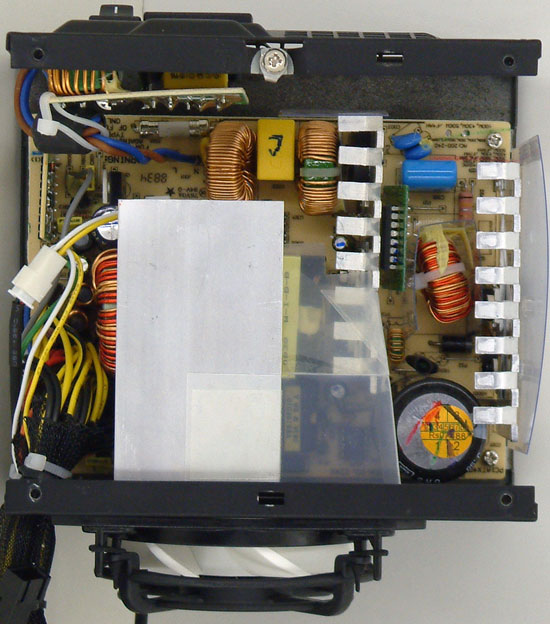
When we open the casing, we find a standard Seasonic layout. Right in front of the fan is a large heatsink that will get plenty of airflow for cooling. A plastic shroud is also present to help channel airflow into the optimal locations, further helping control heat. A heatsink on the side won't get much airflow, but since there aren't many components attached to that heatsink it shouldn't be a problem. A Nippon Chemi-Con capacitor fills the primary role, with Ostor capacitors in the secondary. Ostor might be one of the cheaper capacitor options, but we didn't encounter any problems with these components.
Arctic Cooling - Performance
Please note that we will provide a detailed analysis of the voltage regulation and quality at the end of the article. Each power supply will have detailed results on the performance page, but we will save comparisons until the end where we can provide a high-level overview.
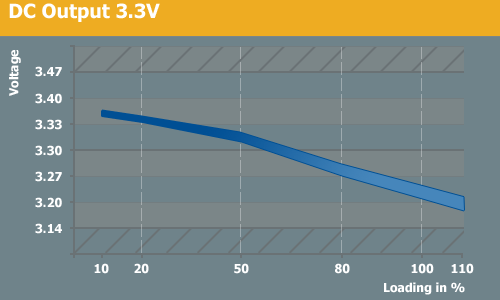
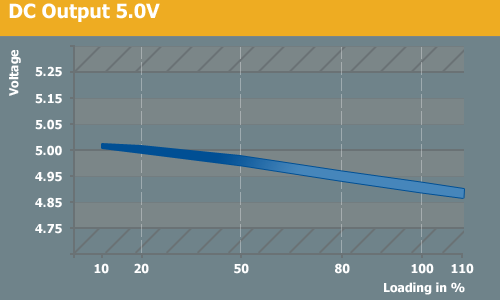

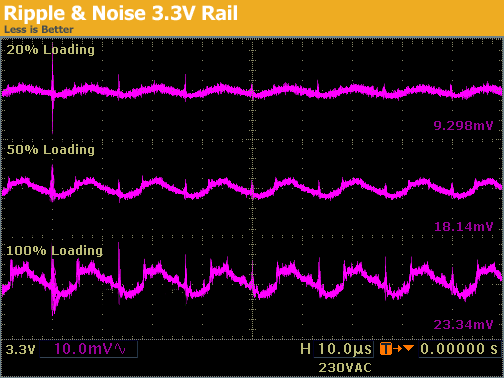
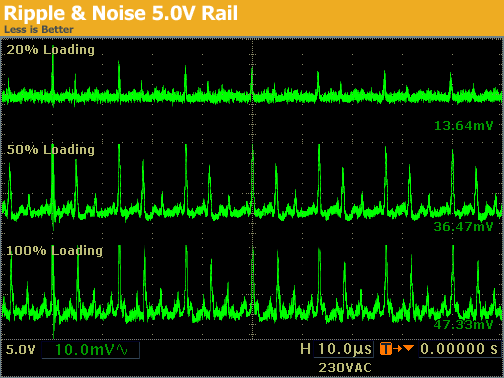
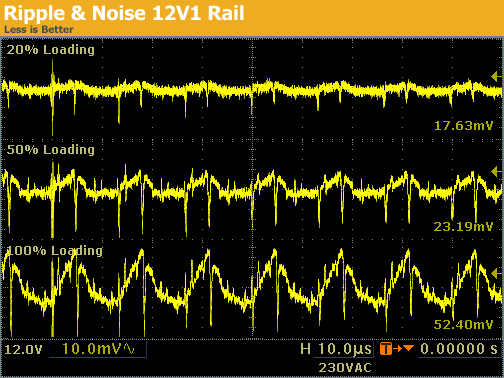

Akasa Green Power AK-PT050FG - Overview

We had quite a few requests from readers in the past asking us to look at some Akasa power supplies. Like Arctic Cooling, Akasa was famous for its coolers at the beginning of this millennium, but they lost business over time to increased competition. Today, the Taiwanese company has a subsidiary in England that's responsible for the European market. We asked Akasa to send us some review samples, and the first model we received is the 500W Green Power. This PSU is manufactured by Enhance, and it's supposed to be a very solid and stable unit. Rest assured, this is not the last Enhance PSU will be looking at today.
Like most power supplies these days, the Green Power has a black exterior. The front of the PSU has some small vertical perforations, which is a little odd as this could cause increased temperatures inside your system. Most of the airflow should still vent through the rear of the PSU, however.
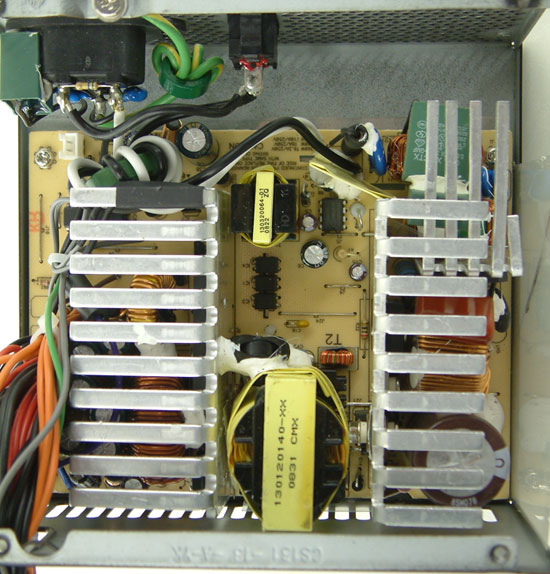
Most of the Enhance units we've seen to date have a large heatsink attached to the rectifier bridge (upper right side of the above image), which sort of resembles an old TV antenna. The rest of the design is pretty basic but contains all of the components we would expect from a higher and power supply. Akasa uses a Nippon Chemi-Con capacitor for the primary, with Su'scon capacitors for the secondary.
Akasa - Performance
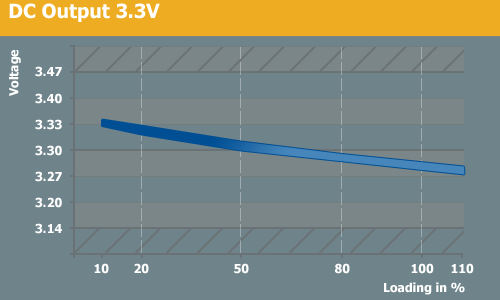
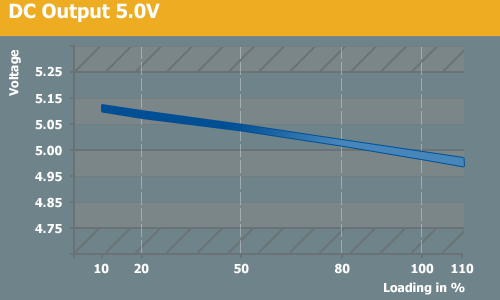
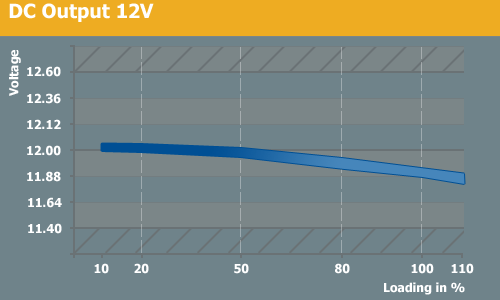
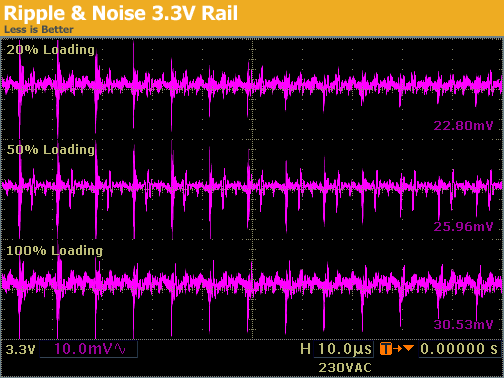
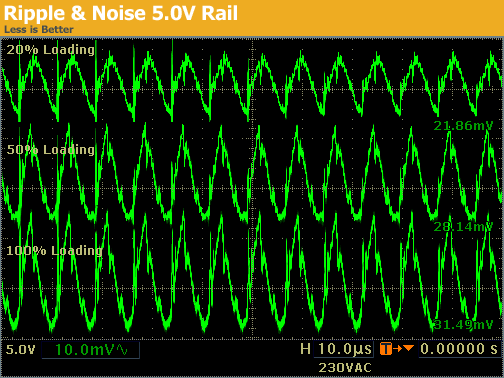
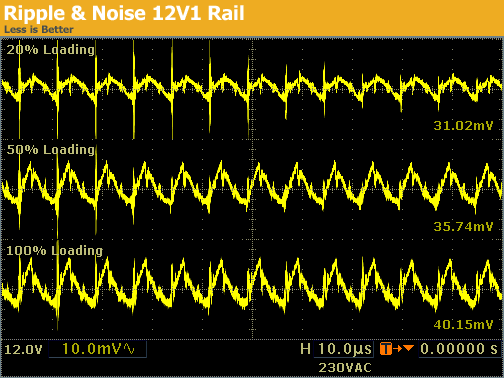
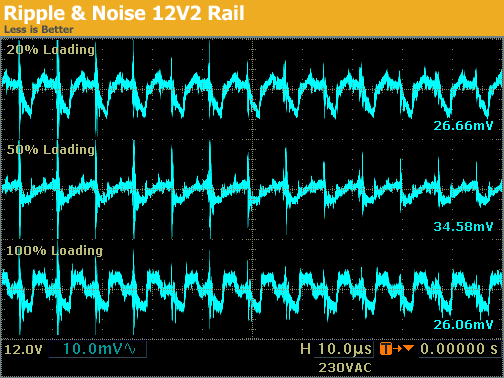
BFG LS-550 - Overview
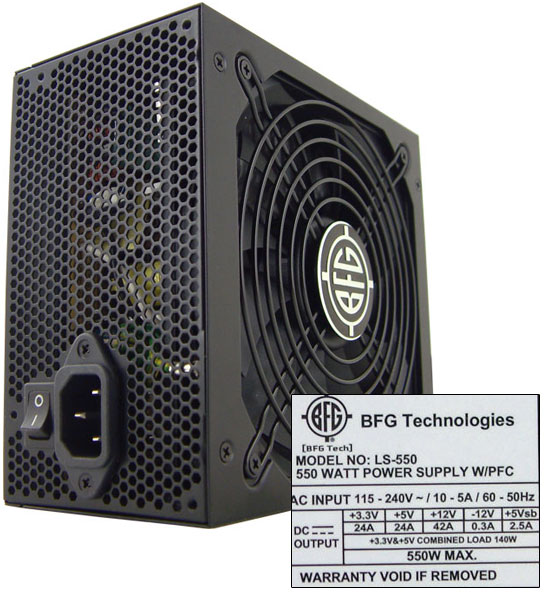
The LS-550 is our first ever BFG power supply unit and we've been looking forward to it. BFG is renowned for its graphics hardware as well as motherboards, and now that they've hired power supply reviewer JonnyGuru we're quite interested in seeing what they can do in the PSU market. The unit we are reviewing today is also manufactured by Enhance, which is clearly visible in the distinctive layout. BFG chose to go with the 140mm fan most Enhance units are using, which is a good idea since these fans are a real benefit to the power supplies.
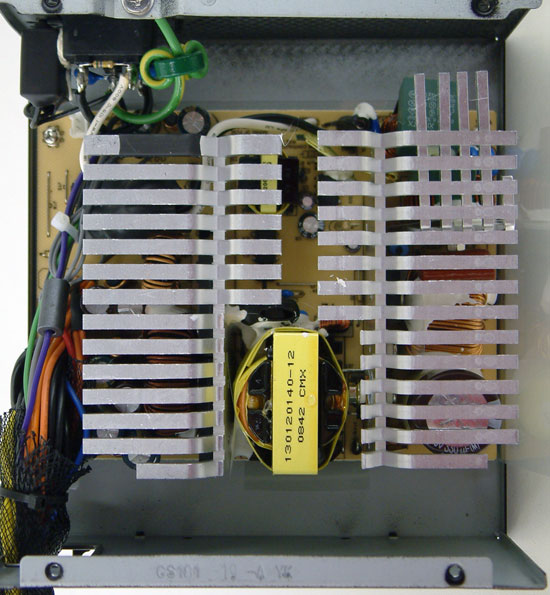
The design looks very similar to the Akasa unit, except it appears BFG went with a longer case to fit the fan. The heatsinks also look slightly different, although placement is the same. The rectifier bridge again gets its own heatsink, which is typical of Enhance made power supplies. A 105°C Nippon Chemi-Con capacitor is used in the primary, paired with a few Teapo caps in the secondary.
BFG - Performance


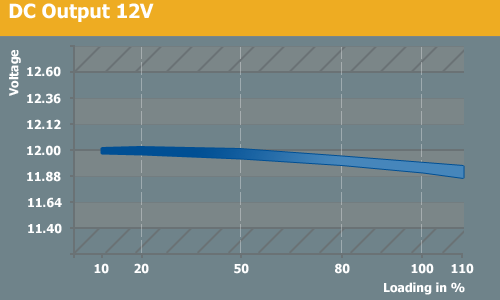
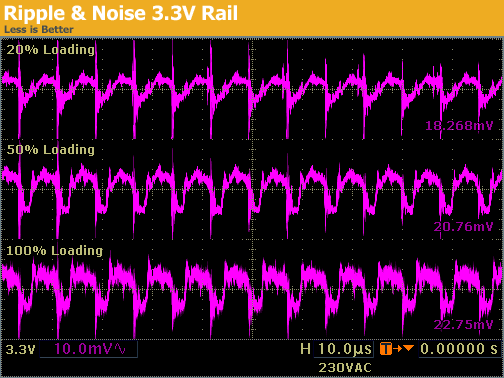
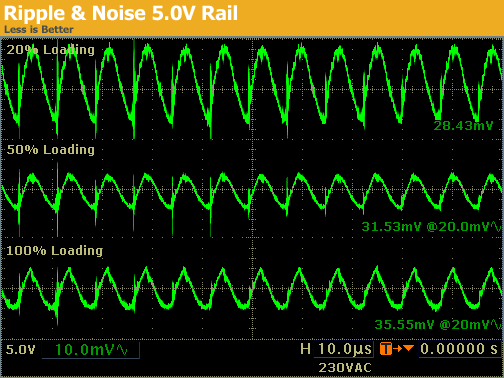
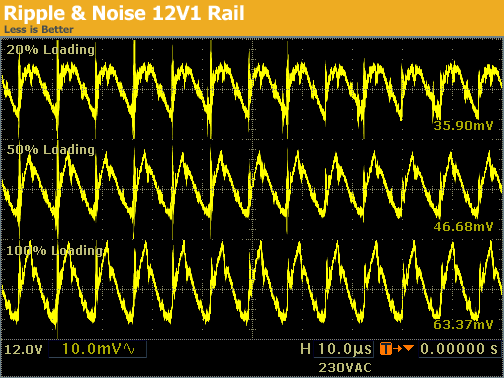

Cooler Master Silent Pro 500W - Overview
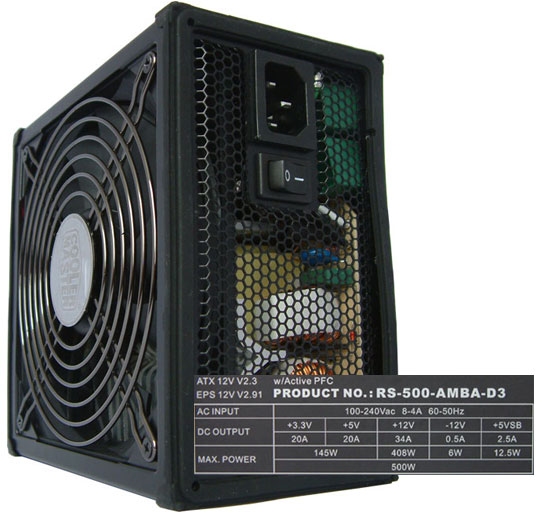
We already reviewed the Cooler Master Silent Pro 500W, but we felt it would be a good inclusion for this roundup. This is the third Enhance manufactured power supply, and it looks very similar to the BFG unit since it also uses a 140mm fan. The difference between the units is that Cooler Master provides a cable management system, so you can remove any extra peripheral or PCI-E cable harnesses. Cooler Master also places rubber frame around the front and rear of the PSU to isolate the power supply from the chassis and dampen noise. Of course, this is only slightly effective since you still have to use screws to secure the power supply to the chassis.
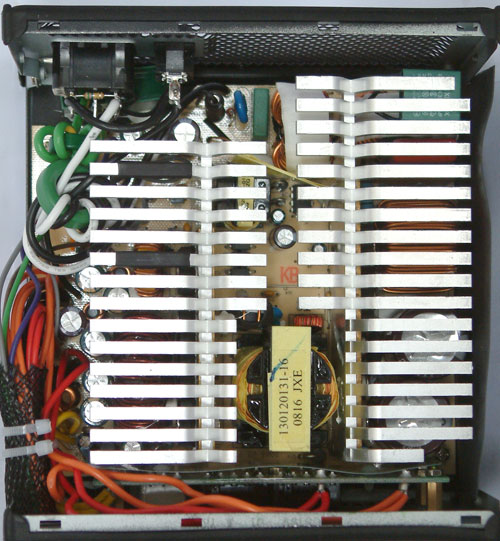
The Cooler Master Silent Pro look slightly different than the other Enhance units in this roundup. For one, the heatsinks are larger and there are thin copper plates between the components and the heatsinks (the color of the material actually looks more like brass and copper, but that's beside the point). There are also more components on the PCB, including two Mequon Chemi-Con capacitors in the primary instead of one. Once again, Su'scon and Teapo capacitors are used in the secondary.
Cooler Master - Performance
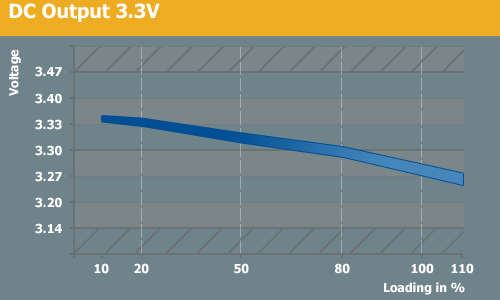
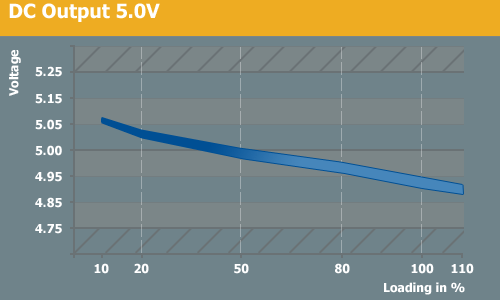
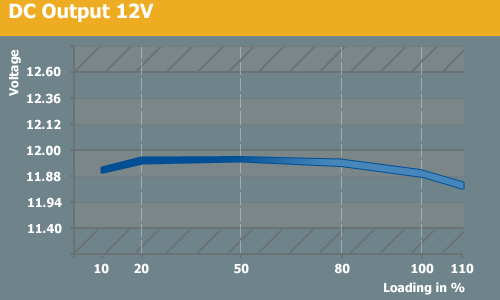

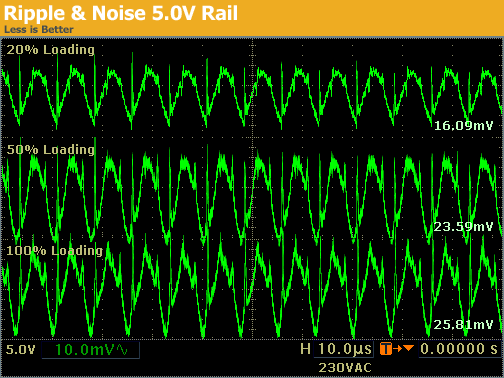
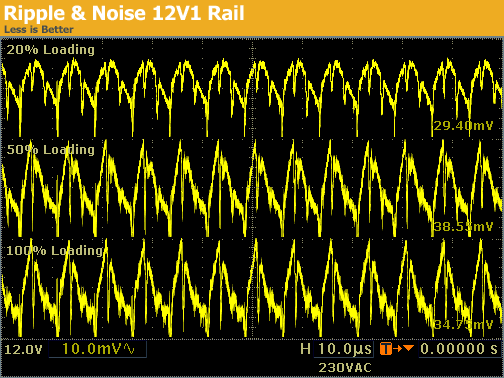

Corsair CMPSU-520HX - Overview
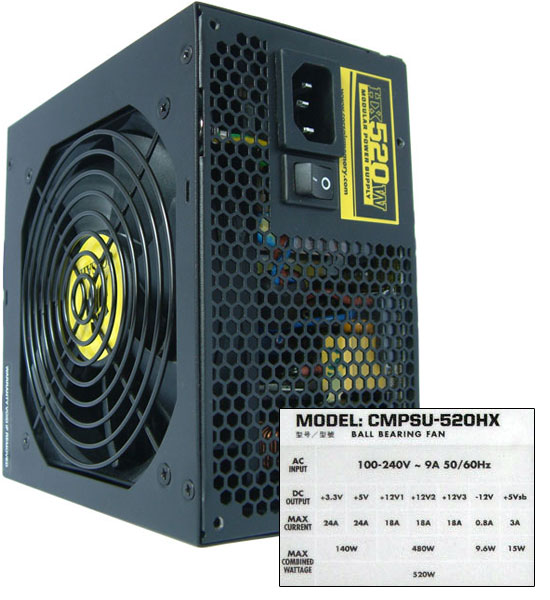
We never had the opportunity to review Corsair's renowned 520W HX series, so we asked Corsair to send us a sample. The 520HX was one of the first power supplies to come out of Corsair, and it paved the way for what we see today. At the time, Corsair was only using Seasonic units, but many of their recent offerings are now manufactured by CWT.
The 520HX comes in the ubiquitous black color scheme, with distinctive yellow stickers on most of the sides. Each Corsair power supply model has a distinctive color, which allows you to easily distinguish between the various units and wattages. Since this is an older Seasonic design, the housing is typical of Seasonic units from a couple years ago. The cable harnesses are flat, which is actually pretty cool since you can fold them up and talk them into various nooks and crannies and avoid impeding airflow.
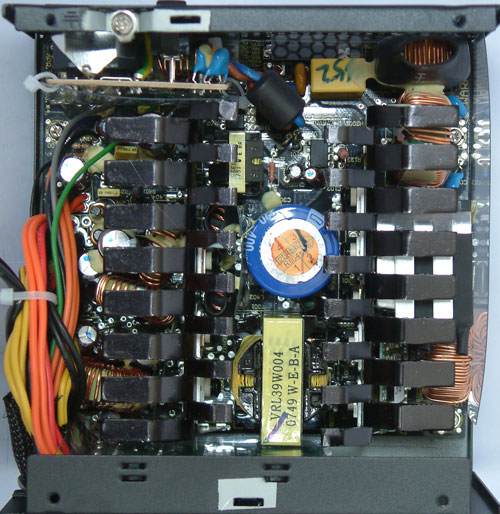
Seasonic offers their Energy+ series utilizing the same design, and those are some of the better performing Seasonic models. The design is very solid but does have a few minor problems with voltage regulation. A Hitachi capacitor is used in the primary, which is somewhat unusual -- most companies use Nippon Chemi-Con now for whatever reason. The secondary is full of Nippon Chemi-Con capacitors, which is nice to see since Seasonic manufactured power supplies frequently used Ostor or other inexpensive capacitors instead.
Corsair - Performance
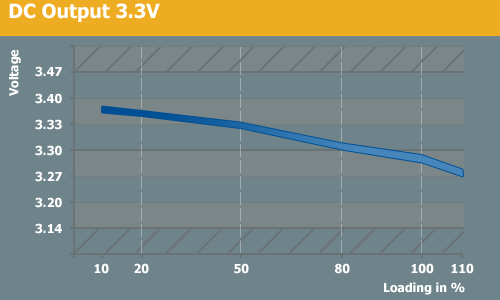
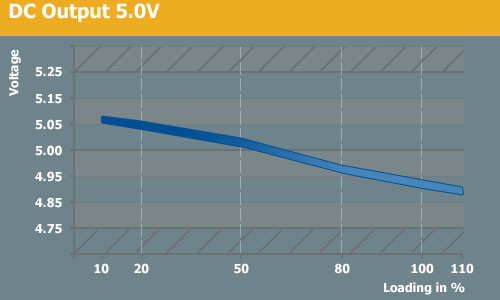

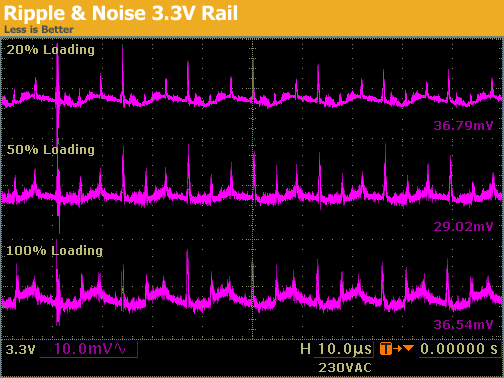

Enermax Liberty Eco ELT500AWT-ECO - Overview
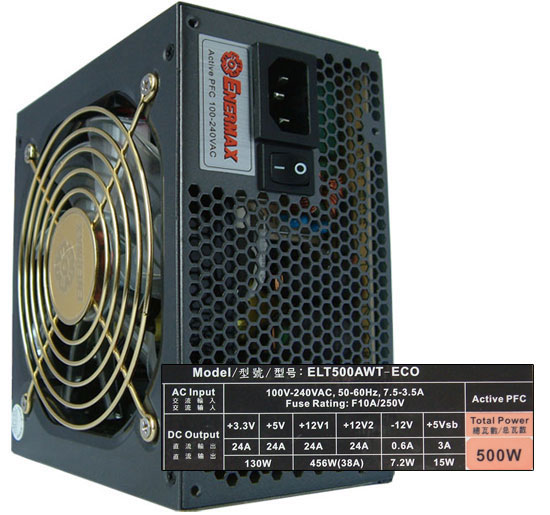
We looked at the 400W Liberty Eco in our last roundup, and it performed very well. The 500W model isn't all that different, since it's only 100W more. Most of the components are the same, with just a few that are rated for higher capacities.
The Liberty Eco comes in gunmetal gray, paired with Enermax's standard Golden fan grille. The power supply also features cable management, so you can remove any extra cable harnesses that you don't need. The jacks on the back of the power supply looks similar to the ones Corsair uses, except Enermax utilizes their patented 12-pin jack for the PCI-E harness. Enermax also includes a bunch of accessories and gadgets; they're mostly unnecessary, and simply add slightly to the price. Perhaps we've just seen a few too many cable harness bags over the years to find them truly necessary.
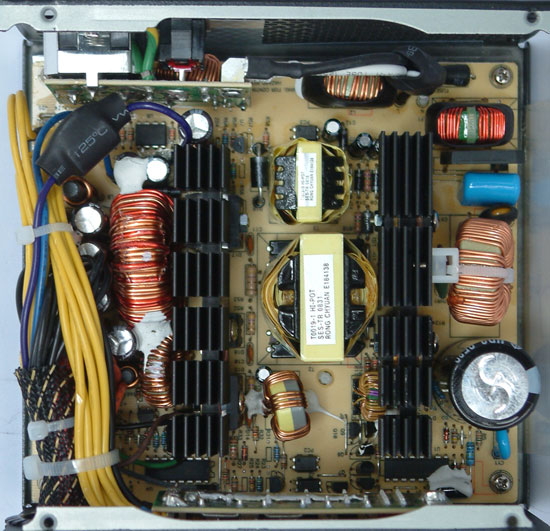
The layout of the Liberty Eco is very simple and clean. Enermax uses some of their latest technologies in this series, making it better than its predecessor, the Modu82+. However, the Modu82+ has been around a while and has more attractive prices, and the 525W model also comes with some extra features that we will discuss later. The short summary is that the Liberty Eco is a very good power supply, but it also happens to be the most expensive power supply in this roundup.
Enermax - Performance
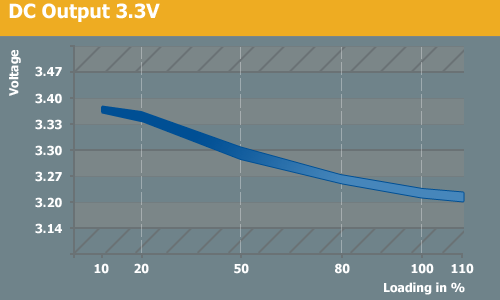

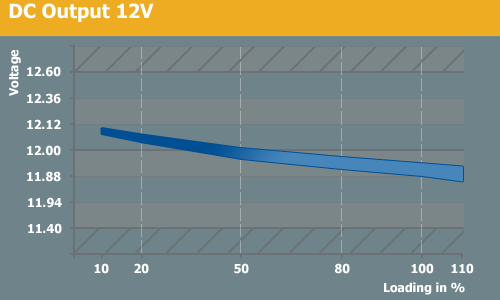

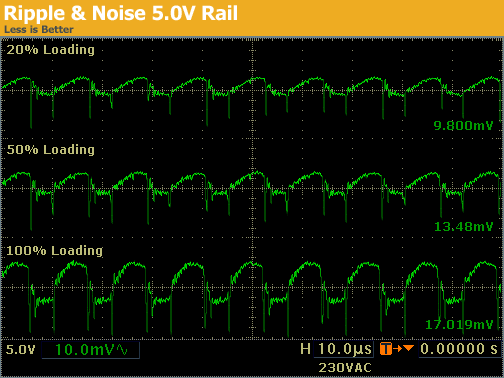
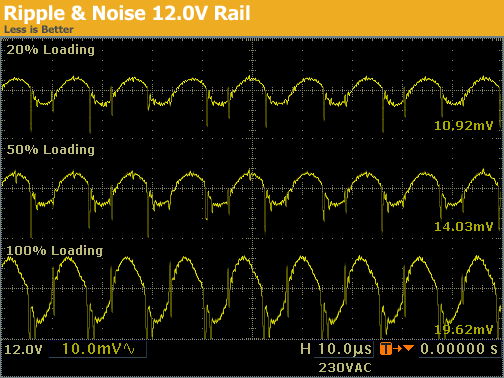
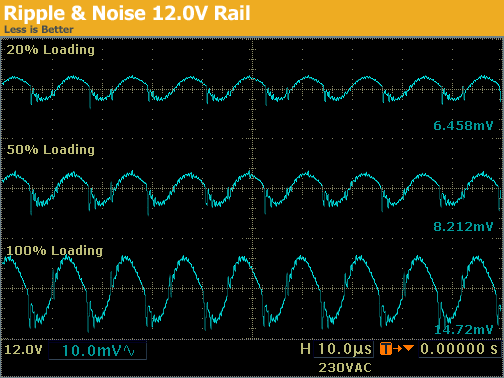
OCZ ModXStream Pro OCZ500MXSP - Overview
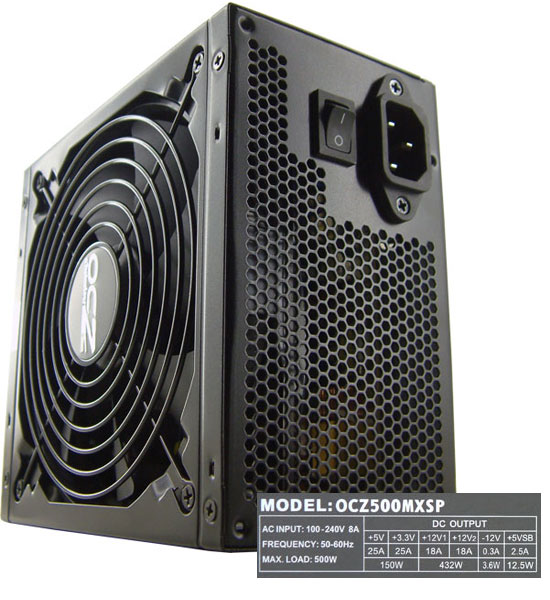
OCZ introduced the ModXStream Pro power supply series a while back, and like the Enermax Liberty Eco we reviewed the 400W model in the last roundup. The odd thing with OCZ is that the 400W unit is manufactured by CWT, whereas Sirtec makes the 500W and 600W units.
As you can guess by the name, the ModXStream Pro series features cable management, allowing you to detach extra harnesses. As usual, the 24-pin, 4-pin, and 8-pin ATX connectors are all permanently attached. This power supply looks quite good, and we expect a high quality interior as well even though Sirtec is not a leader in high-performance power supplies.

The design is reminiscent of other competing products, for example there are many similarities to FSP's Epsilon design. The heatsinks also look similar, consisting of three aluminum plates. We'll have to see what sort of cooling performance those plates can provide, but we don't expect much. The rest of the internal layout is pretty typical, with a minimal number of components in the transient filtering stage and TRec capacitors all over the PCB.
OCZ - Performance

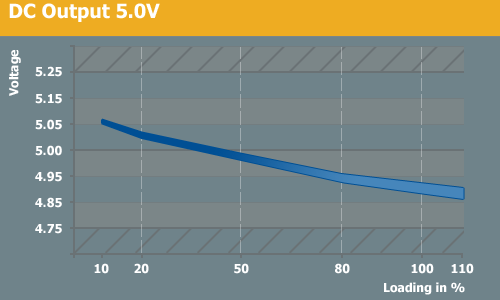

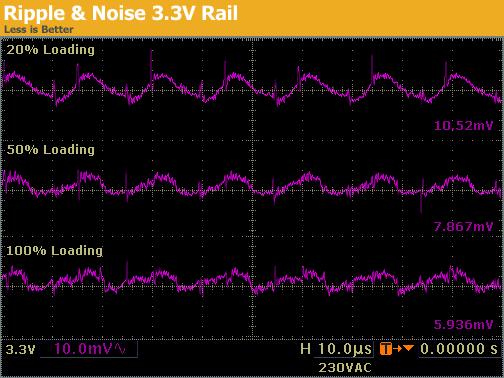
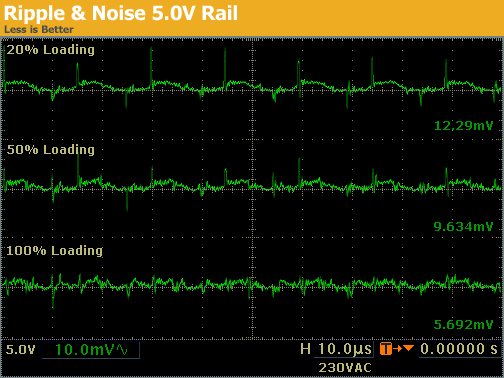
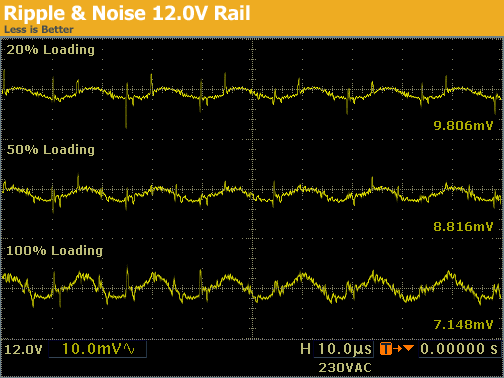

Sunbeam Tuniq Potency POT550 - Overview
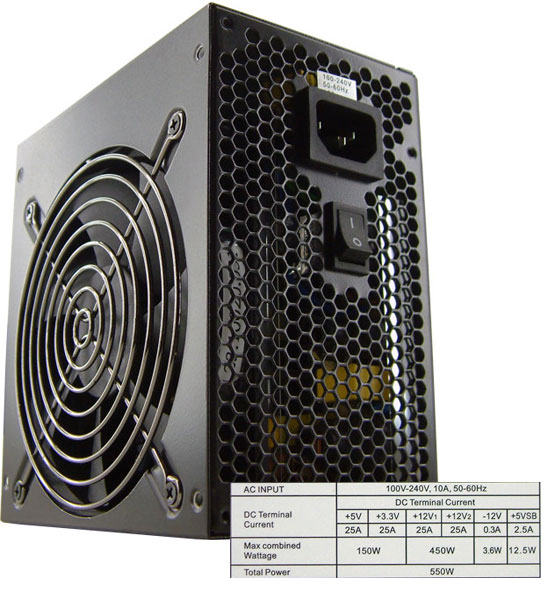
Sunbeam is a company based in Taiwan, selling products in both the US and European markets. They became famous for their modding products several years ago, and those continue to sell quite well. They now manufacture cases, coolers, and power supplies -- many of our readers should be quite familiar with their well-regarded Tuniq Tower 120 CPU cooler. The Tuniq Potency is black like most of the other power supplies, with a 120mm fan and two 25A 12V rails.
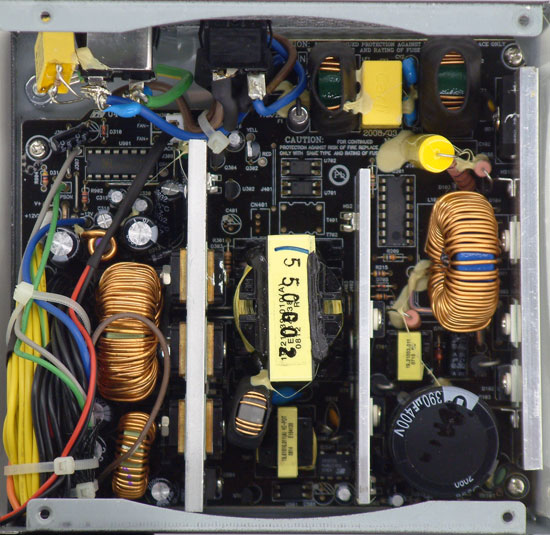
The internals look very similar to the OCZ ModXStream Pro; in fact, it's exactly the same layout with the same Transcend Electrolytic capacitors. There are small press/copper plates between the components and the heatsinks in the middle, though we aren't sure how necessary/effective these are as they're too small to be all that useful. The primary difference between the OCZ ModXStream and the Sunbeam Tuniq Potency is the cable management system on the OCZ unit.
Sunbeam - Performance
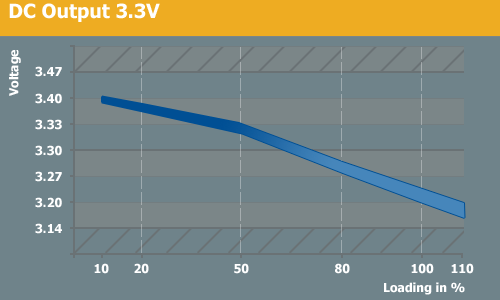
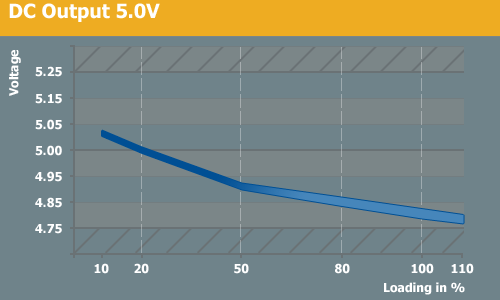


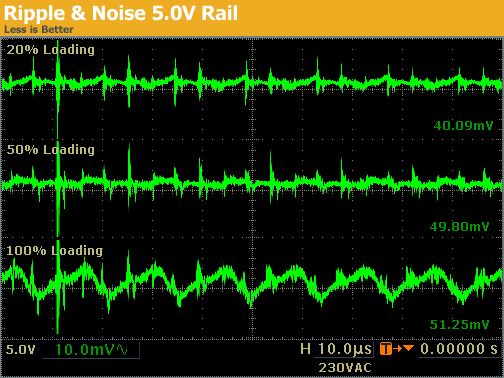
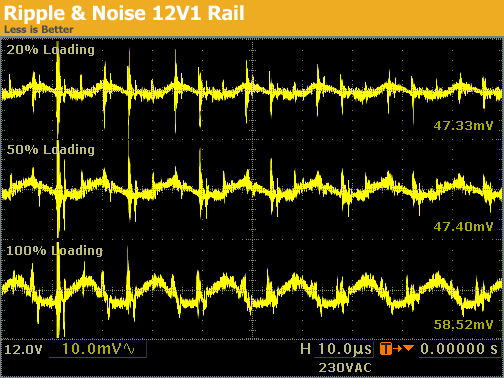
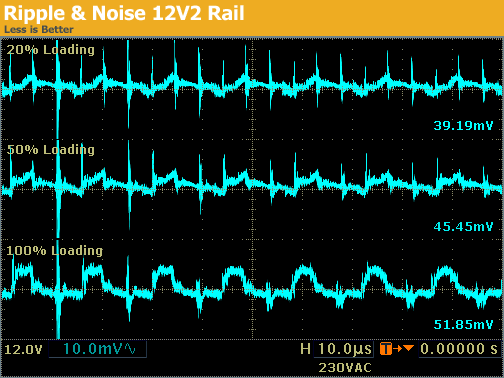
Seasonic M12II SS-500GM - Overview

Seasonic didn't make a lot of noise about their second M12 series when it launched a few years ago. It was a follow-up to the original M12, which included a second small fan to help with cooling. The latest M12II uses a single 120mm fan, which is good since it reduces the acoustical noise and limits the number of points of failure. We're not sure why Seasonic didn't advertise this series more, though it might have something to do with the lawsuit by Ultra against anyone with the cable management system.
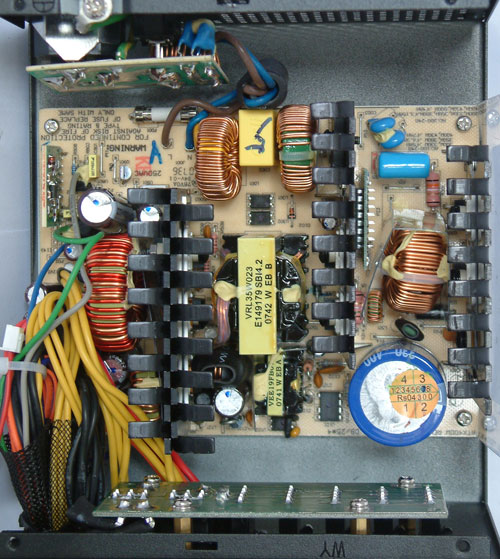
This power supply has been in the market for some time now, so it uses a Hitachi capacitor in the primary with Nippon Chemi-Con secondary capacitors. Hitachi capacitors are seldom seen these days, as they tend to be more expensive. The heatsinks consist of metal plates stamped into the appropriate shapes, and as always Seasonic uses an Adda fan for cooling.
Seasonic M12II - Performance
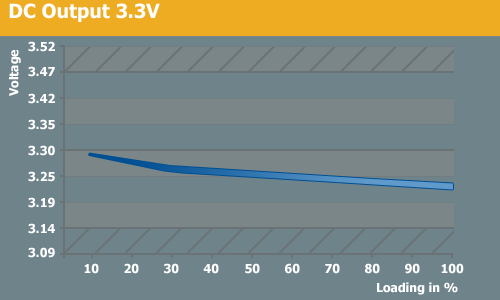
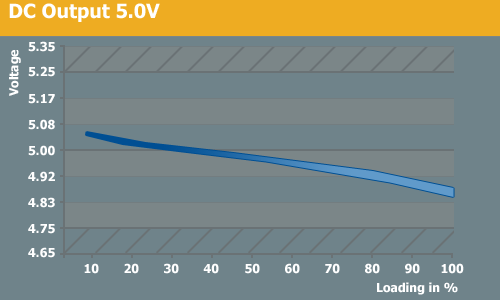
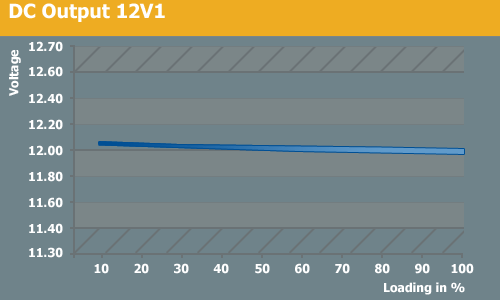
Seasonic S12II SS-500GB - Overview
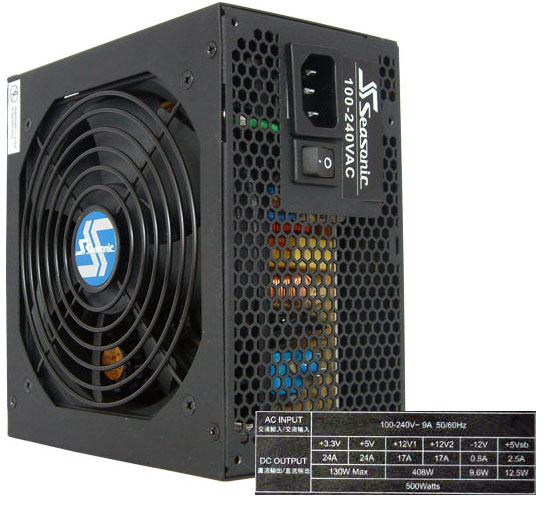
We looked at an S12II 330W power supply in the last roundup, and we are including the 500W model in this roundup; both perform quite well. In fact, we first looked at both of these power supplies in late 2007, which helps to illustrate the point that there hasn't been much innovation in the sub-500W power supply market. The S12II series will soon be upgraded to an 80 Plus Bronze level to help it compete with 80 Plus Gold certified power supplies that will begin showing up in the middle of the year. The S12II offers good performance at a great price, which is one of the reasons this series has sold so well.

There are three heatsinks inside, two for the primary and a larger one for the secondary. Like the M12II, the primary capacitor is manufactured by Hitachi and Nippon Chemi-Con makes the secondary capacitors.
Seasonic S12II - Performance
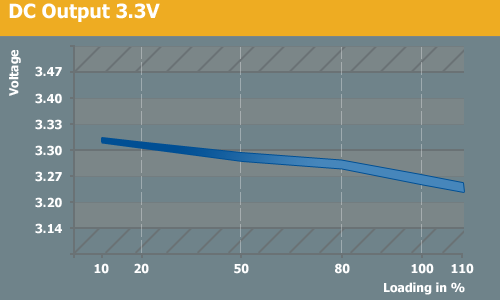

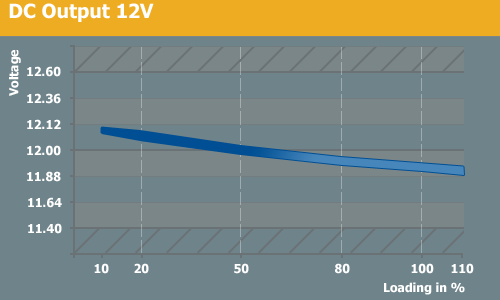
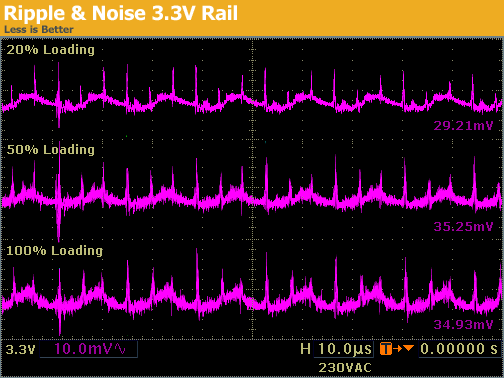
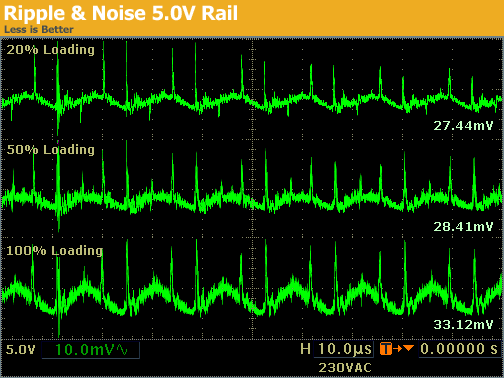
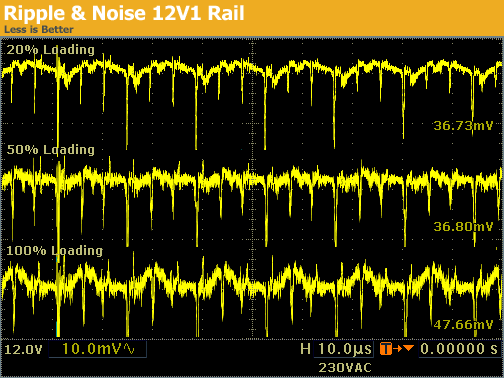
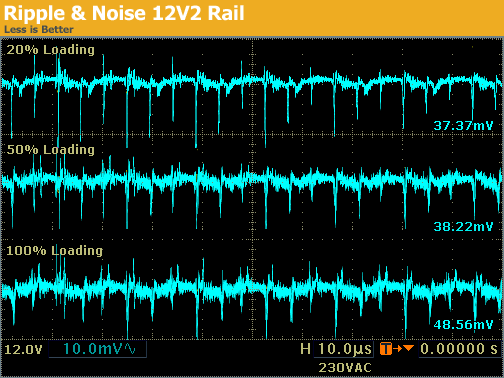
Tagan SuperRock TG500-U33II - Overview

The Tagan SuperRock 400W performed so well in our last roundup that we asked Maxpoint to send us a 500W model as well. We didn't bother to take new pictures, as the two power supplies are virtually identical in appearance with just some minor changes to a few components. This is another Enhance power supply like the Akasa and BFG units, but without the venting holes on the interior. Tagan also utilizes a 120mm fan instead of the 140mm fan we see on other Enhance units.

The internals of the SuperRock look empty, as there aren't all that many components. The primary section has the standard PFC and transient filtering and looks quite good. Nippon Chemi-Con provides the primary capacitor, with Teapo caps in the secondary.
Tagan SuperRock - Performance
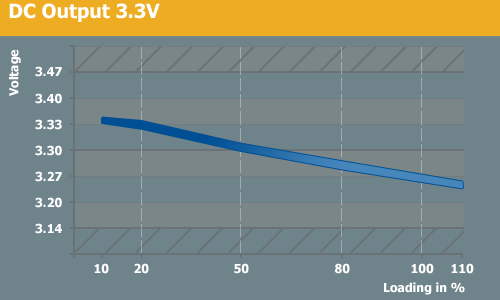
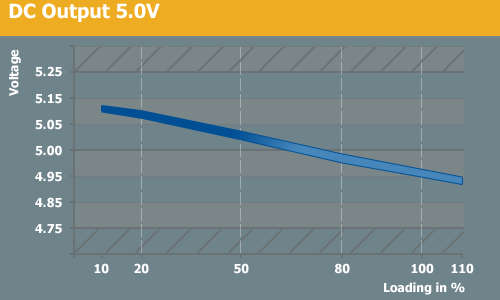
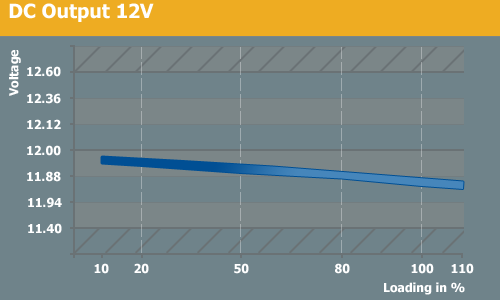
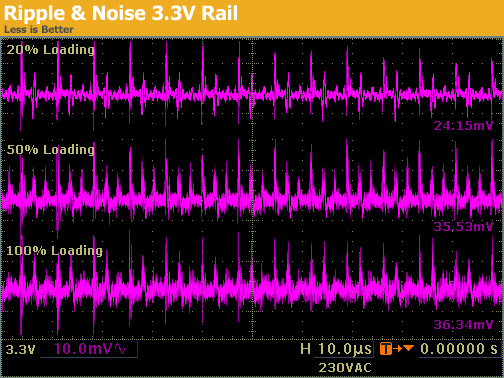
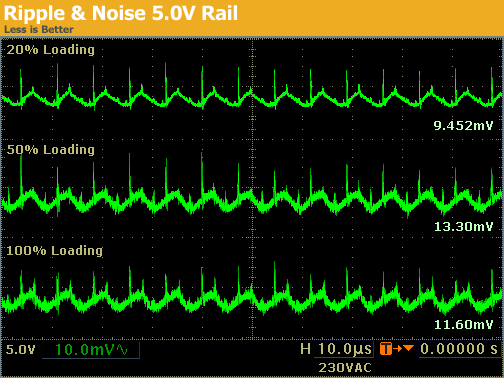
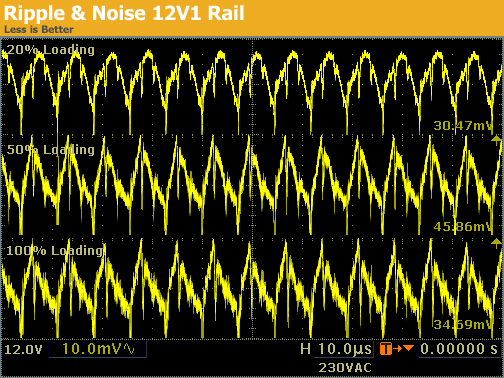
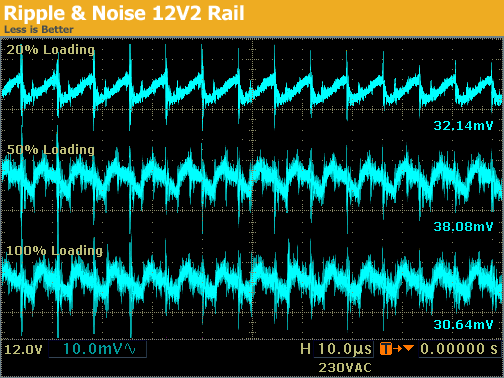
Tagan PipeRock BZ500 - Overview
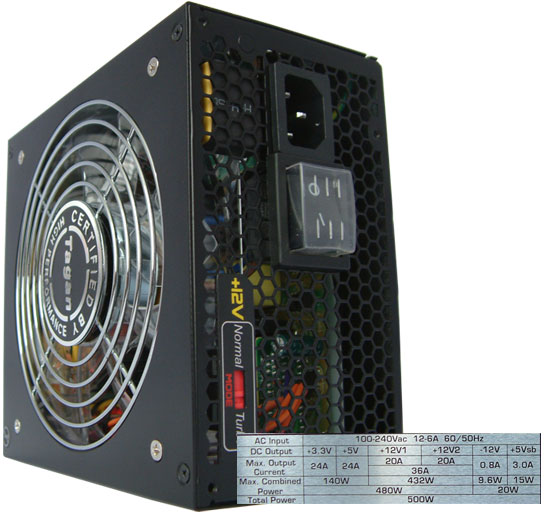
The second Tagan power supply we have is the BZ500, called the "PipeRock" in Europe. Fortunately, this is the only power supply in today's roundup includes blinking lights. Yes, that's a trend we were happy to see fade away, although there are certainly people that still like some bling. If that's your thing, Tagan did a good job, with clearly visible lighting. This is a modular power supply, with blue lights on the peripheral connectors and red and green lights on the PCI-E connectors. We saw similar connectors on a Super Flower PSU, but as far as we know Tagan is the original creator of this design. There's a small switch on the back for "Normal" or "Turbo" mode; this switch actually just disables the OCP on the 12V rails, so you might want to leave it on "Normal".
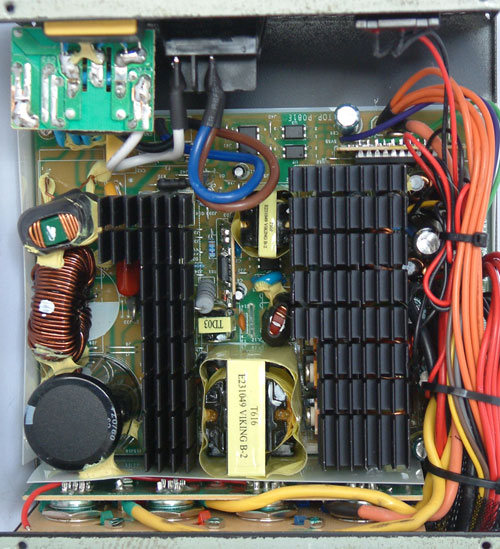
Topower is the ODM for this power supply, and they manufacture all the other Tagan PSUs (and many other brands as well). The transient filtering looks good, but the capacitors are clearly lower end options. Tagan uses a Teapo capacitor for the primary and Samson and Tokin capacitors in the secondary.
Tagan PipeRock - Performance
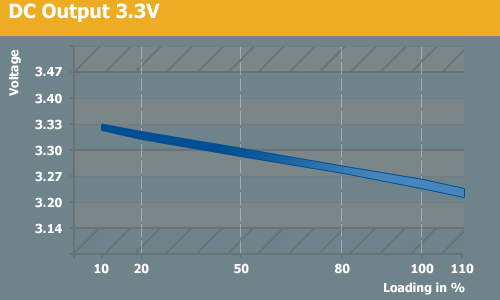
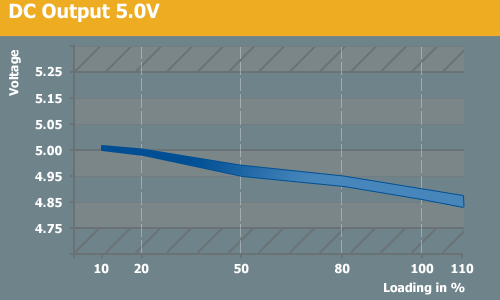
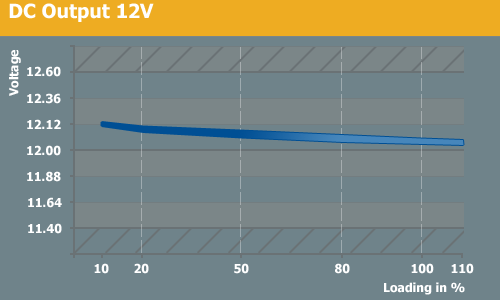
Comparison: Acoustic Noise
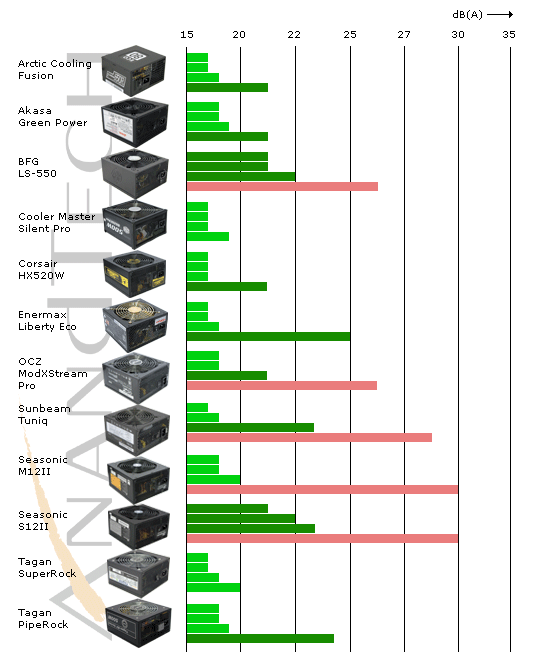
Note: The first column is 10% load, the second 20%, the third 50%, and the last column represents 100% load.
We tested all of the power supplies at various loads, as noted above. To make the chart easier to read at a glance, very low acoustic noise levels are in light green, acceptable noise levels are in darker green, and clearly audible noise levels are in red. Even the red noise levels are relatively quiet in this roundup and should not prove annoying once a power supply is installed in a computer chassis.
Most of the power supplies are nearly silent during lower loads, with more than half of the power supplies staying under 20 dB even at 50% load. BFG Technologies takes the safe route and runs the fan at higher RPMs in order to provide better cooling, and the Seasonic and Sunbeam units take a similar approach.
The Cooler Master and Tagan power supplies are the quietest options, staying below 20 dB at all loads. Whether or not that's a healthy approach to power supply design is debatable, as these power supplies do run hotter than the others. It's possible they will fail sooner rather than later, but if you plan on running at lower loads and you want a silent system, these are clearly the best options. On the other hand, we definitely wouldn't say the approach of BFG, Seasonic, and Sunbeam use is wrong; particularly at higher loads, we have no problem with increasing fan speeds to keep temperatures in check.
Comparison: Cooling Performance
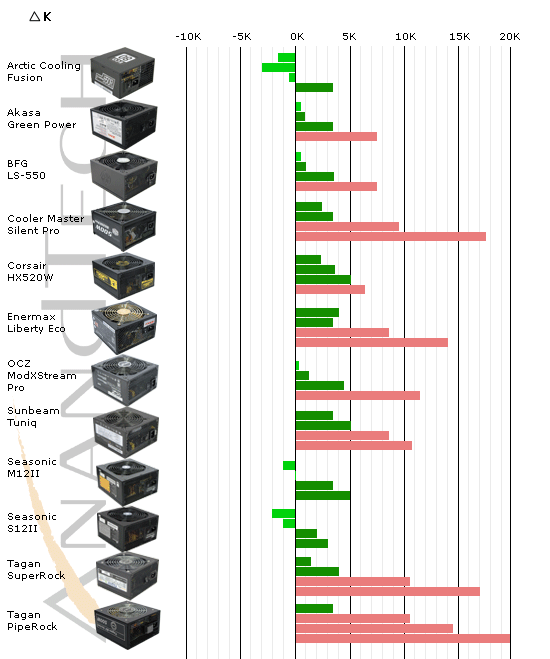
Note: The first column is 10% load, the second 20%, the third 50%, and the last column represents 100% load.
We decided to take a different approach to showing cooling performance in this review. Rather than showing rock temperatures, we show the difference between the internal heat and the exhaust heat, which is called Delta K. If Delta K is positive, it means there is heat building up inside of the power supply; the larger the bar, the hotter it is inside the PSU. The negative part indicates cooling performance is very good and hot air is being ventilated. It's normal for power supply to gain heat at higher loads, and it's up to the fan in heatsinks to dissipate this heat as much as possible.
Looking at the charts, we can see that the "noisy" Seasonic units do very well at removing heat, because of the higher fan RPMs. Lower noise levels directly correlate with higher temperatures, which we see on the Cooler Master and Tagan models for example. Although the Arctic Cooling power supply has a quiet fan, the cooling performance is still very good. Of course, this has a lot to do with the extremely high efficiency of the Fusion, which we'll see in a moment -- high efficiency means less heat produced in the first place.
Comparison: Efficiency
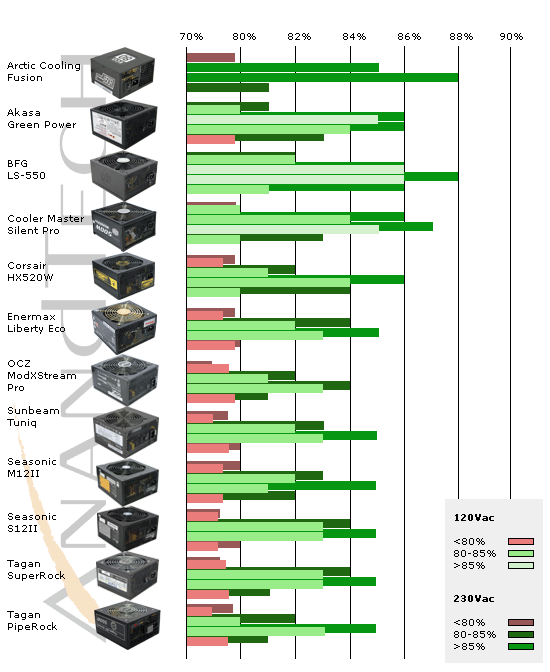
Note: The first column is 10% load, the second 20%, the third 50%, and the last column represents 100% load.
The efficiency charts make one thing very clear: Seasonic and Enhance deliver kickass efficiency with their products. Even though 85% efficiency isn't that great anymore, Seasonic still has good overall efficiency at different loads. Seasonic will be the first company to ship three 80 Plus Gold certified power supplies by the way, which we should see in the very near future. We have already seen test reports and this looks to be a good year for Seasonic since no other companies appear to be on track.
Getting back to this roundup, Arctic Cooling, Akasa, BFG, and Cooler Master are at the top of the charts -- Arctic Cooling and BFG reach a tremendous 88% efficiency at 50% load! Note that we received a 230VAC-only PSU from Arctic Cooling, since we had that unit for a while already and they weren't shipping the multiple input version yet. Looking at the 120VAC results, BFG provides the best efficiency in this roundup, followed by Akasa and Cooler Master.
Comparison: ATX Cable Lengths
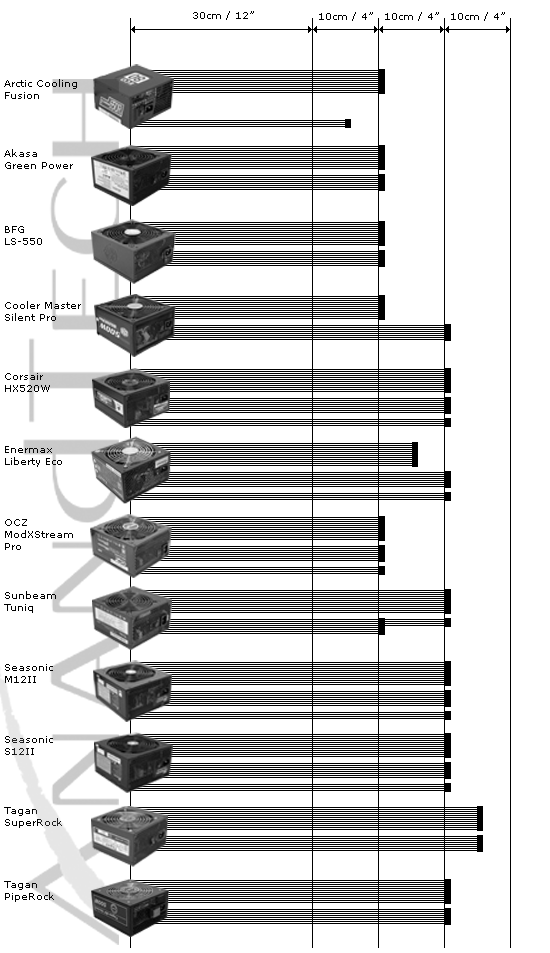
Looking at the charts, there's a large difference between the 500W-550W units in this roundup and the 300W-450W units in the last roundup. The cable lengths on these power supplies are mostly around 40 cm to 50 cm, and only the Tagan SuperRock provides an extra 5 cm.
Arctic Cooling has rather short ATX cable harnesses, with 35 cm on the 4-pin connector and 40 cm on the 24-pin ATX connector. Arctic Cooling is also the only company that didn't equip their unit with an 8-pin connector, which may limit its usefulness on higher and setups. All of the other power supplies include at the very least an 8-pin connector that can be split into a 4-pin connector if that's all you need.
Comparison: PCI-E Cable Lengths
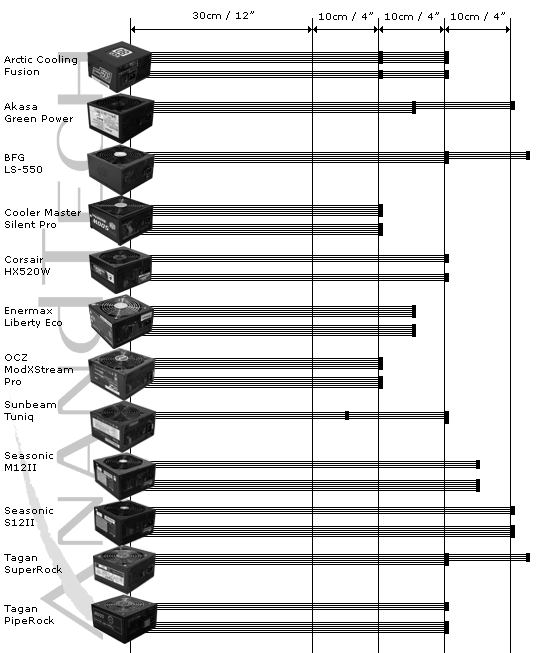
A 500W power supply is more than capable of running multiple graphics cards. The primary limitation in most cases will be the number of PCI-E connectors. Some of the power supplies only include two PCI-E connectors to be "safe", which is still sufficient for a decent high-end graphics card provided you don't need an 8-pin PEG connector.
Oddly enough, considering their lack of an 8-pin ATX connector, Arctic Cooling is the only company to provide four PCI-E connectors. The other companies include either one 6-pin and one 6/8-pin PEG, or in the case of Corsair two 6-pin PEG connectors. Again, these power supplies should be more than capable of running multiple high-end graphics cards, but the manufacturers have limited things so that you won't inadvertently pressure power supply too far.
In terms of cable lengths, we can see greater variation than last time. The Sunbeam Tuniq is on the short end of the list, starting at 35 cm, and the Tagan SuperRock provides a maximum length of 65 cm.
Comparison: SATA Cable Lengths

SATA connectors continue to increase in prominence in modern systems, since many new hard drives only include SATA power plugs and we are seeing an increasing number of optical drives that utilize SATA connectors. Unfortunately, quite a few power supply companies apparently haven't noticed this trend, and they think that four or five SATA connectors is sufficient. After all, most computers only have one hard drive and one optical drive -- who needs more than that?
This is one case where modular power supplies can be very convenient, particularly if the manufacturer chooses to provide extra harnesses. You could build a system today with more Molex connectors, but in a couple years the only thing using Molex connectors might be your fans, at which point in time you could switch to SATA harnesses. Corsair, Enermax, and Sunbeam only provide four or five SATA connectors, while most of the others provide six.
Tagan is the only company to provide eight SATA plugs, on both of the models we tested today. Tagan also has the longest SATA harnesses, at 90 cm and 95 cm. Arctic Cooling also offers a single connector at 90 cm; however, the single longest SATA harness could become a problem if you have a large case with SATA optical drives at the top and hard drives at the bottom, which is why we prefer multiple SATA harnesses.
Comparison: Molex Cable Lengths
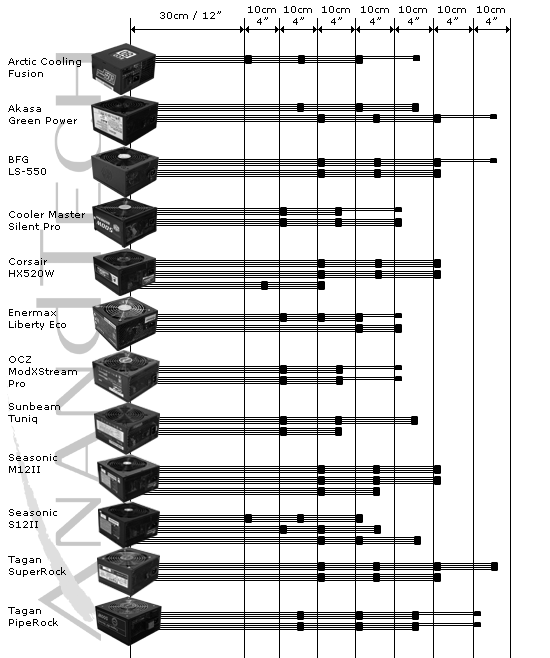
Most of the units have two or more cable harnesses for Molex connectors, with sufficient lengths for most users. The exception is the Arctic Cooling Fusion, which only has three Molex connectors on one cable harness. If you don't tend to use Molex connectors, that might be fine, although the single string of SATA connectors could still be a problem. Keep in mind that Molex connectors can also be important for connecting fans, unless you use a fan control unit. Obviously, Arctic Cooling decided to focus on providing more PCI-E connectors at the cost of SATA and Molex harnesses.
Both the Seasonic M12II and S12II along with Corsair's HX520 include three harnesses and eight Molex connectors -- nine on S12II. While we appreciate having extra connectors, eight or nine Molex connectors seems to be overkill. In fact, our custom PC Power & Cooling Turbo Cool 860 only has three Molex connectors, and we've been happily using it for quite some time.
Comparison: Prices
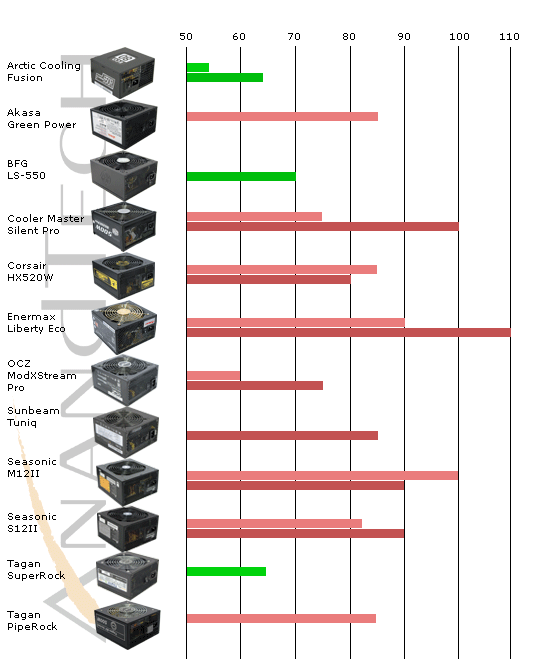
Not all of the power supplies are available in all locations, so we quote the European price in light green/red and the US price in dark green/red. Red prices indicate that we are not satisfied with the overall bang for the buck, while green bars indicate a good bargain. Note that the color of the bar is not based strictly on pricing; quality is also important, so a low price on a poor quality PSU won't garner a green bar.
Akasa only plans to sell their product in Europe, focusing on the UK, and frankly the price is far too high for an Enhance platform -- BFG and Tagan are able to sell similar units for a lot less money. The Enermax Liberty Eco is another power supply that is simply too expensive at this point in time. It might offer good performance, but for the same price you can find better power supplies.
In terms of recommendations, Arctic Cooling's Fusion has a very low price of just €54 or $64, making them the least expensive unit in this roundup. For the performance and features, the Fusion 550 is a worthwhile PSU. The $70 BFG also offers a very good price to performance ratio, although BFG only targets the North American market. In contrast, we recommend the Tagan SuperRock unit with a price of €65, which is not yet available in the US.
Thoughts and Recommendations
So there you have it, another 12 power supplies reviewed and dissected. This time, our conclusion is a little easier because there are only a few models that really stuck out from the crowd. There are a few areas where companies try to differentiate, and which areas you think are most important will influence our recommendation.
First we have acoustic noise, which can be critical if you want to build a "silent" computer. Next we have efficiency, which is often overhyped considering a 1% or even 2% difference doesn't really equal a lot of money over the course of the year. Still, all things being equal, higher efficiency is desirable. Cooling performance is also important, and is often directly related to the efficiency -- although the components also play a large role. Some are also interested in the features of the power supply (i.e. cable lengths, cable management, accessories, etc.) Finally, we have voltage stability and quality, which is arguably the most important aspect -- especially if you plan on overclocking your system.
Below we've listed the various areas you might focus on, along with PSU recommendations that do particularly well in that category.
Cable Lengths and Connectors
There were a lot of differences between most of the power supplies, as we've already discussed. The Arctic Cooling PSU is the only unit that doesn't include an 8-pin ATX connector. We talked with the company about this, and they insisted 8-pin connectors aren't necessary -- you can just use a 4-pin connector in half of an 8-pin jack on your motherboard. While it may work, we would still prefer to have an 8-pin connector; if it's unnecessary, why do motherboards have eight pin jacks?
The ATX cable lengths on the Arctic Cooling Fusion, Akasa Green Power, BFG LS-550, and OCZ ModXStream Pro are rather short at just 40 cm, which would definitely be a problem in larger cases or bottom mounted PSU designs. The Tagan SuperRock has the longest ATX cables at 55 cm. The remaining power supplies are 50 cm, which is the "standard" length.
The good news is that all of the tested power supplies have at least two PEG connectors, which is enough to run either a lower-end SLI/CF setup or a single high-end graphics cards with two PEG jacks. Arctic Cooling is the only unit that provides four PCI-E connectors. Cable lengths are also quite different; if you need longer cables, we recommend the Tagan SuperRock, Seasonic S12II or M12II, or the BFG LS-550.
We already discussed the relative importance of SATA and Molex connectors. A typical PC might only need one of each, and even high-end PCs might only need four or five of each connector type. We wanted to fully populate the drive bays in computer cases that we test, so we had PC Power & Cooling build us a custom Turbo Cool 860 with 15 SATA connectors, but most people don't need that kind of setup. If you do want more connectors, out of the tested power supplies we recommend the Tagan units. Both include eight SATA connectors and six Molex connectors, with very good cable lengths. Arctic Cooling provide six SATA connectors, but they are on a single harness which could prove problematic in certain cases.
DC Voltage Regulation and Quality
All of the power supplies stayed within specifications, which is very good to see. Since these are mostly high-end units, we didn't expect anything less, but kudos regardless. Many of the power supplies stayed within 3% regulation, which is what most companies aim for. Ideally, voltages should start about 1% above the nominal value and stay in that range. Most 3.3V and 5V rails ended up dropping about 3% below regulation, but ripple and noise was generally good.
A few of the units come pretty close to the maximum and minimum allowed voltages on the various rails, for example the Sunbeam. Ripple also exceeded specifications by a few millivolts on the Sunbeam. Overall, the 12V rail is the most important rail, and the BFG LS-550 manages an impressive 1.5% regulation on this rail. Seasonic also scores some points here with the tightest regulation we have seen to date.
Efficiency
A quick look at the efficiency chart shows there's only one power supply that provides superior efficiency at all voltage inputs, and that's the BFG LS-550. With 120VAC it starts at 82% efficiency and reaches a maximum of 86% efficiency; 230VAC performed even better, with 86% efficiency at 20/80 loads and a maximum of 88% efficiency at 50% load. The Arctic Cooling Fusion also performs well, reaching 88% efficiency at a medium load. The Cooler Master Silent Pro does well on 230VAC, but it has minor flaws on 120VAC.
All of the other units manage to reach 85% efficiency (230VAC), which is pretty typical these days. Considering the performance of the BFG, which is manufactured by Enhance, we expected similar performance from Tagan; unfortunately, that's not the case. We would like to see Tagan work on refining their unit to match the performance of BFG.
Acoustic Noise
Acoustic noise is often an important consideration, and many people want their computers to be seen and not heard. Our equipment can measure down to 17 dB(A), at which point background noise comes into play. Noise levels at medium load and lower are typically the important consideration, since few users actually run their power supplies at more than 50% load. Our charts show that most of the power supplies are able to remain very quiet below 50% load, to the point where other components in the computer will almost certainly generate more noise.
The Arctic Cooling Fusion again warrants a mention, with 17 to 18 dB up to 50% load. The Cooler Master Silent Pro performs superbly, along with the Tagan SuperRock, and both remain below 20 dB. Akasa, Corsair, and Enermax also perform well. Seasonic and Sunbeam prefer to take the safe route and spin the fans faster in order to keep temperatures down, which is often the better course of action if you prefer longevity overload noise.
Cooling Performance
Not surprisingly, the crown for the best cooling performance goes to Seasonic. This goes hand-in-hand with their higher noise levels, which helps to keep temperatures in check. Seasonic also built the Arctic Cooling Fusion, which delivers very good results. Our temperature chart looked at Delta K, the difference between internal and exhaust temperatures. The only three power supplies to generate negative scores are built by Seasonic. Akasa, BFG, and Corsair don't quite match the Seasonic built units, but performance is very good in all three cases.
Unfortunately, the Sunbeam Tuniq Prophecy didn't survive our burn-in test. It self-destructed under full load at 40°C, so we definitely wouldn't recommend that power supply unless you live in a cold environment or only plan to run at lower loads. All of the other units survived heat conditions of 50°C.
Prices
Last, we come to prices, which for some people is far and away most important factor in choosing a power supply. Not all of the units are available in all locations, so you will also have to take that into consideration. The BFG LS-550 is only available in the US right now, but we've seen other BFG power supplies in Europe so we have high hopes it will soon be there as well. For the overall performance it delivers, the BFG is an excellent bargain at $70. The Arctic Cooling Fusion is available for €55 or $64, and at that price it's a great bargain. The Tagan SuperRock also perform very good, and a price of €64 makes it our third choice for overall value and performance.
On the opposite end of the scale, the Enermax Liberty Eco is simply too expensive right now. The Cooler Master Silent Pro could also do with a slight price drop. Seasonic makes good power supplies, but they also make power supplies for a lot of competitors. As such, they tend to charge more for their own brand in order to avoid competing with their clients on similar products.
Awards
We conclude yet another gigantic power supply roundup with our Editors' Choice awards.
 |
Tagan's SuperRock delivered very stable voltage and low ripple on the 5V and 12V rails. The 3.3V rail has higher ripple but it's still within specifications. Acoustic noise is very low, and even at maximum load the SuperRock doesn't break 20 dB with an ambient temperature of 26°C. The 85% efficiency is pretty average these days, which is one of our few complaints, but the cable harnesses are good and users that want run a lot of components will appreciate the vast selection of SATA and Molex connectors. We are pleased to present Tagan with our Bronze Editors' Choice award.
 |
Our Silver Editors' Choice award goes to Arctic Cooling for their Fusion power supply. This is another very quiet power supply that still manages to deliver excellent cooling performance. The maximum efficiency is among the best in this roundup, reaching 88% efficiency at medium load and 85% efficiency at 20% load. We do have some minor complaints about the cables and connectors, but those are only really a concern if you don't run what would qualify as a "typical" computer (i.e. fewer than three hard drives). Voltage stability was great for a Seasonic built unit and ripple was within specifications. All of this is topped by an extremely attractive price of €54 or $64.
 |
Last but certainly not least, the top power supply of our roundup today is the BFG LS-550. BFG delivered good performance in every aspect, with tight voltage regulation and ripple well within specifications. Efficiency was through the roof, with 86% efficiency at 20% load. It also generated the highest maximum efficiency of 88% on 230VAC and 86% on 120VAC. This isn't the quietest power supply, but it's not at all noisy -- few people would notice this PSU once it's installed within a PC case. You also get a reasonable number of connectors and good cable lengths. The excellent build quality and performance makes the US selling price of $70 a great deal; we can only hope that European users will soon be able to purchase this power supply as well. All of this makes the BFG LS-550 the winner of our Gold Editors' Choice award.























































































































































